Monstrous-mind - The Monster Mind






More Posts from Monstrous-mind and Others

gateway to autumn (via All sizes | Gate to Autumn | Flickr - Photo Sharing!)
Water, Water Everywhere; We Track Drops to Drink!
When we think about what makes a planet habitable, we’re often talking about water. With abundant water in liquid, gas (vapor) and solid (ice) form, Earth is a highly unusual planet. Almost 70% of our home planet’s surface is covered in water!

But about 97% of Earth’s water is salty – only a tiny amount is freshwater: the stuff humans, pets and plants need to survive.
Water on our planet is constantly moving, and not just geographically. Water shifts phases from ice to water to vapor and back, moving through the planet’s soils and skies as it goes.
That’s where our satellites come in.

Look at the Midwestern U.S. this spring, for example. Torrential rain oversaturated the soil and overflowed rivers, which caused severe flooding, seen by Landsat.

Our satellites also tracked a years-long drought in California. Between 2013 and 2014, much of the state turned brown, without visible green.

It’s not just rain. Where and when snow falls – and melts – is changing, too. The snow that falls and accumulates on the ground is called snowpack, which eventually melts and feeds rivers used for drinking water and crop irrigation. When the snow doesn’t fall, or melts too early, communities go without water and crops don’t get watered at the right time.

Even when water is available, it can become contaminated by blooms of phytoplankton, like cyanobacteria . Also known as blue-green algae, these organisms can make humans sick if they drink the water. Satellites can help track algae from space, looking for the brightly colored blooms against blue water.


Zooming even farther back, Earth’s blue water is visible from thousands of miles away. The water around us makes our planet habitable and makes our planet shine blue among the darkness of space.

Knowing where the water is, and where it’s going, helps people make better decisions about how to manage it. Earth’s climate is changing rapidly, and freshwater is moving as a result. Some places are getting drier and some are getting much, much wetter. By predicting droughts and floods and tracking blooms of algae, our view of freshwater around the globe helps people manage their water.
Make sure to follow us on Tumblr for your regular dose of space: http://nasa.tumblr.com.



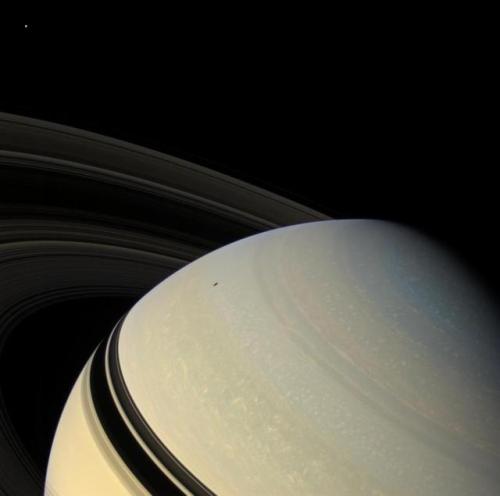
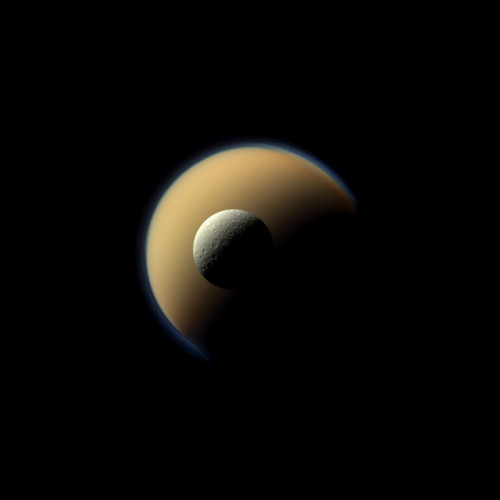
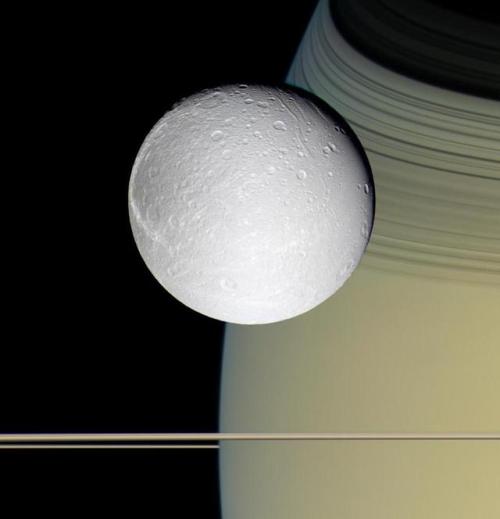
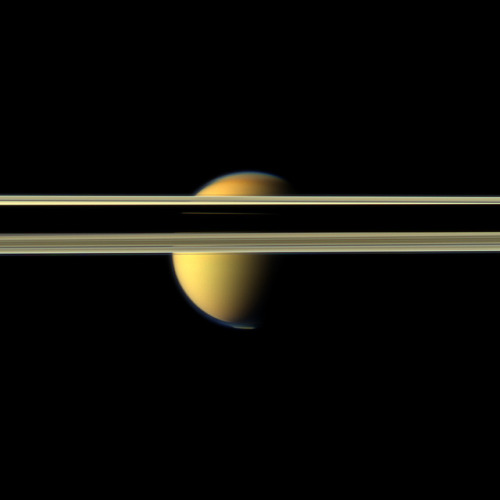
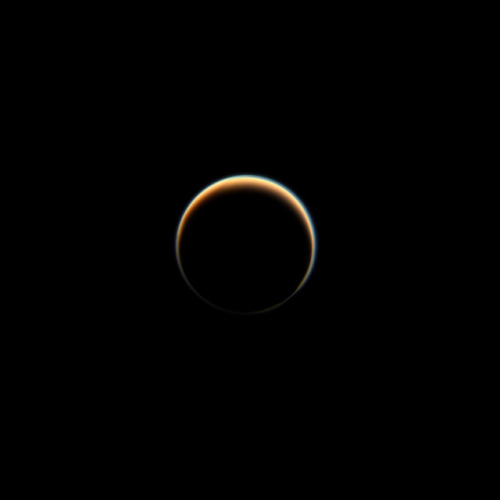
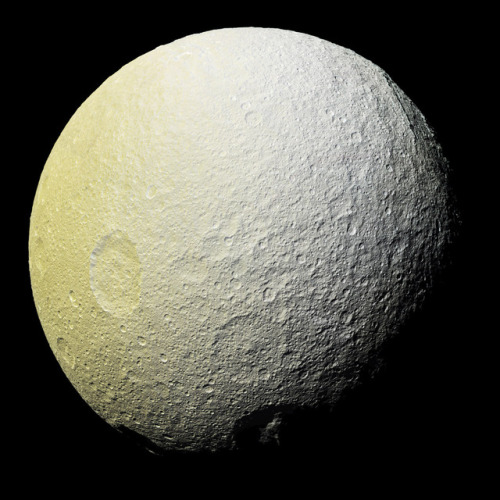
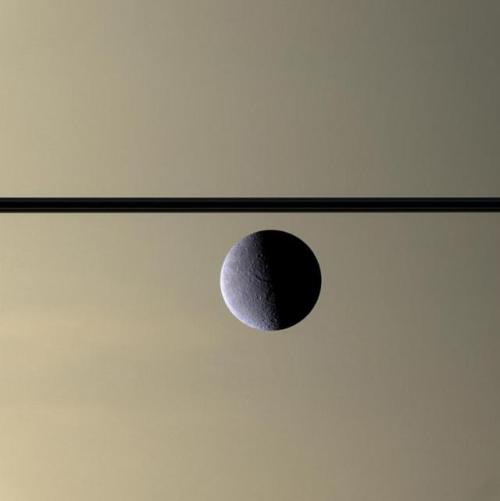

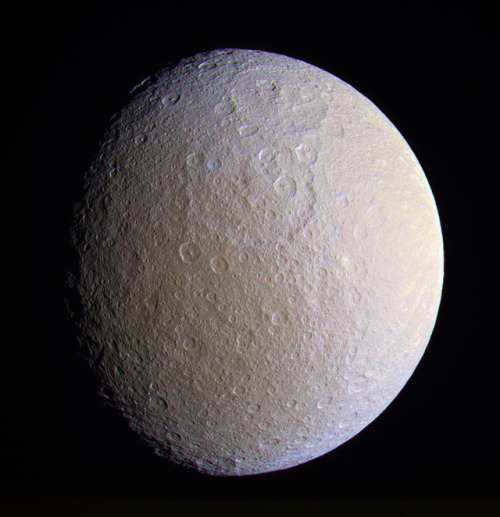
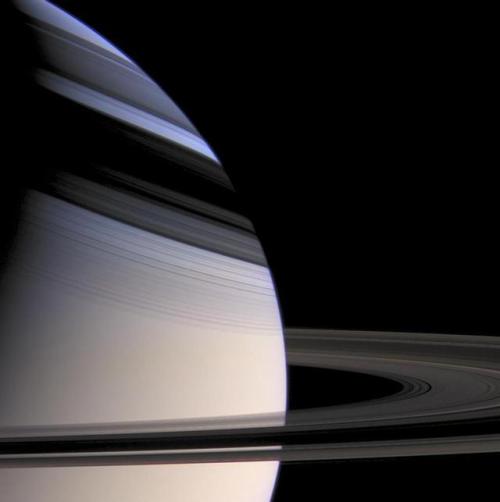
Saturn and its moons
Image credit: NASA/JPL-Caltech
10 Things: Calling All Pluto Lovers
June 22 marks the 40th anniversary of Charon’s discovery—the dwarf planet Pluto’s largest and first known moon. While the definition of a planet is the subject of vigorous scientific debate, this dwarf planet is a fascinating world to explore. Get to know Pluto’s beautiful, fascinating companion this week.
1. A Happy Accident

Astronomers James Christy and Robert Harrington weren’t even looking for satellites of Pluto when they discovered Charon in June 1978 at the U.S. Naval Observatory Flagstaff Station in Arizona – only about six miles from where Pluto was discovered at Lowell Observatory. Instead, they were trying to refine Pluto’s orbit around the Sun when sharp-eyed Christy noticed images of Pluto were strangely elongated; a blob seemed to move around Pluto.
The direction of elongation cycled back and forth over 6.39 days―the same as Pluto’s rotation period. Searching through their archives of Pluto images taken years before, Christy then found more cases where Pluto appeared elongated. Additional images confirmed he had discovered the first known moon of Pluto.
2. Forever and Always

Christy proposed the name Charon after the mythological ferryman who carried souls across the river Acheron, one of the five mythical rivers that surrounded Pluto’s underworld. But Christy also chose it for a more personal reason: The first four letters matched the name of his wife, Charlene. (Cue the collective sigh.)
3. Big Little Moon

Charon—the largest of Pluto’s five moons and approximately the size of Texas—is almost half the size of Pluto itself. The little moon is so big that Pluto and Charon are sometimes referred to as a double dwarf planet system. The distance between them is 12,200 miles (19,640 kilometers).
4. A Colorful and Violent History

Many scientists on the New Horizons mission expected Charon to be a monotonous, crater-battered world; instead, they found a landscape covered with mountains, canyons, landslides, surface-color variations and more. High-resolution images of the Pluto-facing hemisphere of Charon, taken by New Horizons as the spacecraft sped through the Pluto system on July 14 and transmitted to Earth on Sept. 21, reveal details of a belt of fractures and canyons just north of the moon’s equator.
5. Grander Canyon

This great canyon system stretches more than 1,000 miles (1,600 kilometers) across the entire face of Charon and likely around onto Charon’s far side. Four times as long as the Grand Canyon, and twice as deep in places, these faults and canyons indicate a titanic geological upheaval in Charon’s past.
6. Officially Official

In April 2018, the International Astronomical Union—the internationally recognized authority for naming celestial bodies and their surface features—approved a dozen names for Charon’s features proposed by our New Horizons mission team. Many of the names focus on the literature and mythology of exploration.
7. Flying Over Charon
This flyover video of Charon was created thanks to images from our New Horizons spacecraft. The “flight” starts with the informally named Mordor (dark) region near Charon’s north pole. Then the camera moves south to a vast chasm, descending to just 40 miles (60 kilometers) above the surface to fly through the canyon system.
8. Strikingly Different Worlds

This composite of enhanced color images of Pluto (lower right) and Charon (upper left), was taken by New Horizons as it passed through the Pluto system on July 14, 2015. This image highlights the striking differences between Pluto and Charon. The color and brightness of both Pluto and Charon have been processed identically to allow direct comparison of their surface properties, and to highlight the similarity between Charon’s polar red terrain and Pluto’s equatorial red terrain.
9. Quality Facetime

Charon neither rises nor sets, but hovers over the same spot on Pluto’s surface, and the same side of Charon always faces Pluto―a phenomenon called mutual tidal locking.
10. Shine On, Charon

Bathed in “Plutoshine,” this image from New Horizons shows the night side of Charon against a star field lit by faint, reflected light from Pluto itself on July 15, 2015.
Read the full version of this week’s ‘10 Things to Know’ article on the web HERE.
Make sure to follow us on Tumblr for your regular dose of space: http://nasa.tumblr.com.

NASA’s TESS Mission Hopes to Find Exoplanets Beyond Our Solar System : The worlds orbiting other stars are called “exoplanets,” and they come in a wide variety of sizes, from gas giants larger than Jupiter to small, rocky planets about as big around as Earth or Mars. This rocky super-Earth is an illustration of the type of planets future telescopes, like NASA’s TESS, hope to find outside our solar system. (via NASA)




Flower of the Dead, essence of Aztec Marigold. Always loved October and November, The colors and essence of autumn.
-
 alicedyers liked this · 1 year ago
alicedyers liked this · 1 year ago -
 alicedyers reblogged this · 1 year ago
alicedyers reblogged this · 1 year ago -
 lockscreenvibestm reblogged this · 2 years ago
lockscreenvibestm reblogged this · 2 years ago -
 ironbatartisanprune liked this · 2 years ago
ironbatartisanprune liked this · 2 years ago -
 silverrosegarden reblogged this · 3 years ago
silverrosegarden reblogged this · 3 years ago -
 autumnsolstice-baby reblogged this · 3 years ago
autumnsolstice-baby reblogged this · 3 years ago -
 pravum-vulpes-umbra-imperatrix liked this · 3 years ago
pravum-vulpes-umbra-imperatrix liked this · 3 years ago -
 wightlotus liked this · 4 years ago
wightlotus liked this · 4 years ago -
 happinessbegins2020 liked this · 4 years ago
happinessbegins2020 liked this · 4 years ago -
 fancy-club-hot-tub liked this · 4 years ago
fancy-club-hot-tub liked this · 4 years ago -
 luciethedreamer liked this · 4 years ago
luciethedreamer liked this · 4 years ago -
 leafenclaw liked this · 4 years ago
leafenclaw liked this · 4 years ago -
 bemydearlydeparted reblogged this · 4 years ago
bemydearlydeparted reblogged this · 4 years ago -
 cecysthings reblogged this · 4 years ago
cecysthings reblogged this · 4 years ago -
 ceciliasteelbeauty liked this · 4 years ago
ceciliasteelbeauty liked this · 4 years ago -
 oogieboogussy reblogged this · 4 years ago
oogieboogussy reblogged this · 4 years ago -
 spiritosdr liked this · 4 years ago
spiritosdr liked this · 4 years ago -
 theseeker1864 liked this · 4 years ago
theseeker1864 liked this · 4 years ago -
 secretumpoeta liked this · 4 years ago
secretumpoeta liked this · 4 years ago -
 autumn--weather reblogged this · 4 years ago
autumn--weather reblogged this · 4 years ago -
 lisa-anna-99 liked this · 4 years ago
lisa-anna-99 liked this · 4 years ago -
 eriiichan reblogged this · 4 years ago
eriiichan reblogged this · 4 years ago -
 eriiichan liked this · 4 years ago
eriiichan liked this · 4 years ago -
 ilmiobazaar reblogged this · 4 years ago
ilmiobazaar reblogged this · 4 years ago -
 stephxbaby96 liked this · 4 years ago
stephxbaby96 liked this · 4 years ago -
 purplecrowqueen liked this · 4 years ago
purplecrowqueen liked this · 4 years ago -
 darthstun reblogged this · 5 years ago
darthstun reblogged this · 5 years ago -
 thatxmysticalxautumnxbreeze reblogged this · 5 years ago
thatxmysticalxautumnxbreeze reblogged this · 5 years ago -
 sophieceline liked this · 5 years ago
sophieceline liked this · 5 years ago -
 jjayisjay liked this · 5 years ago
jjayisjay liked this · 5 years ago -
 moonofthelife liked this · 5 years ago
moonofthelife liked this · 5 years ago -
 saudade-do-mar reblogged this · 5 years ago
saudade-do-mar reblogged this · 5 years ago -
 qualitystatesmanmongerexper-blog liked this · 5 years ago
qualitystatesmanmongerexper-blog liked this · 5 years ago -
 elves-dwarves-dragons-hobbits liked this · 5 years ago
elves-dwarves-dragons-hobbits liked this · 5 years ago -
 caffeinatedvampireslayer liked this · 5 years ago
caffeinatedvampireslayer liked this · 5 years ago -
 yaoinokiss reblogged this · 5 years ago
yaoinokiss reblogged this · 5 years ago -
 svesdnaya liked this · 5 years ago
svesdnaya liked this · 5 years ago -
 rebxlgrl liked this · 5 years ago
rebxlgrl liked this · 5 years ago -
 foggysuitdestiny reblogged this · 5 years ago
foggysuitdestiny reblogged this · 5 years ago -
 foggysuitdestiny liked this · 5 years ago
foggysuitdestiny liked this · 5 years ago
My ambition is handicapped by laziness. -C. Bukowski Me gustan las personas desesperadas con mentes rotas y destinos rotos. Están llenos de sorpresas y explosiones. -C. Bukowski. I love cats. Born in the early 80's, raised in the 90's. I like Nature, Autumn, books, landscapes, cold days, cloudy Windy days, space, Science, Paleontology, Biology, Astronomy, History, Social Sciences, Drawing, spending the night watching at the stars, Rick & Morty. I'm a lazy ass.
222 posts